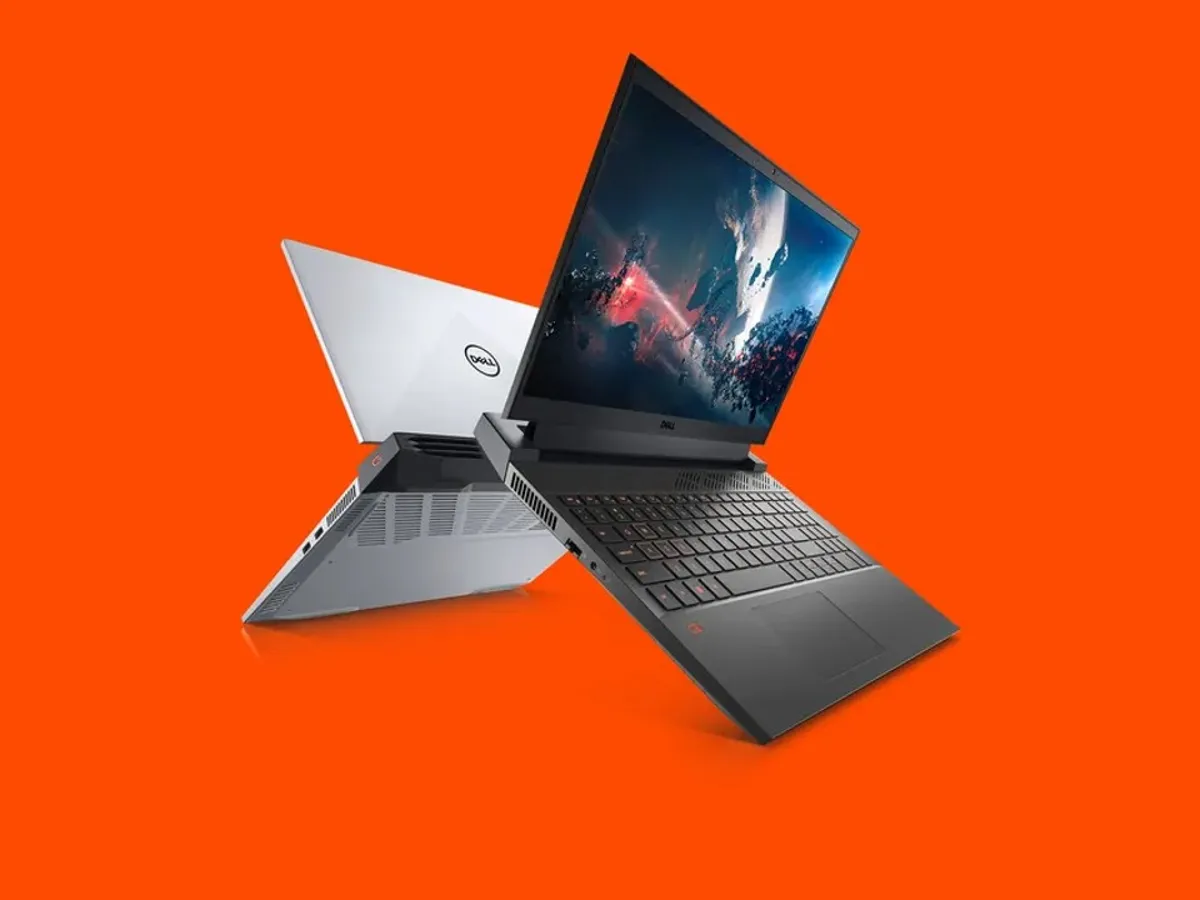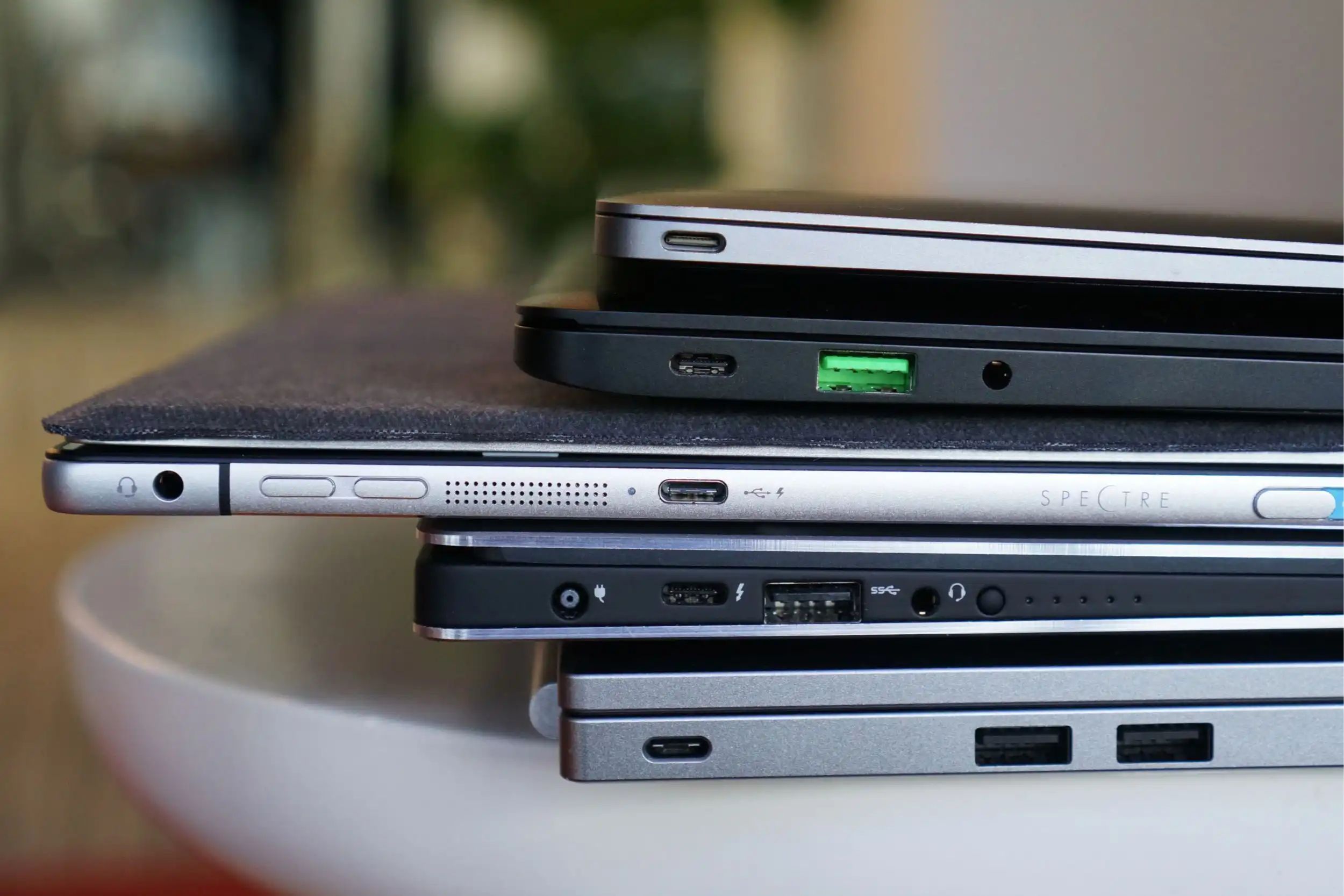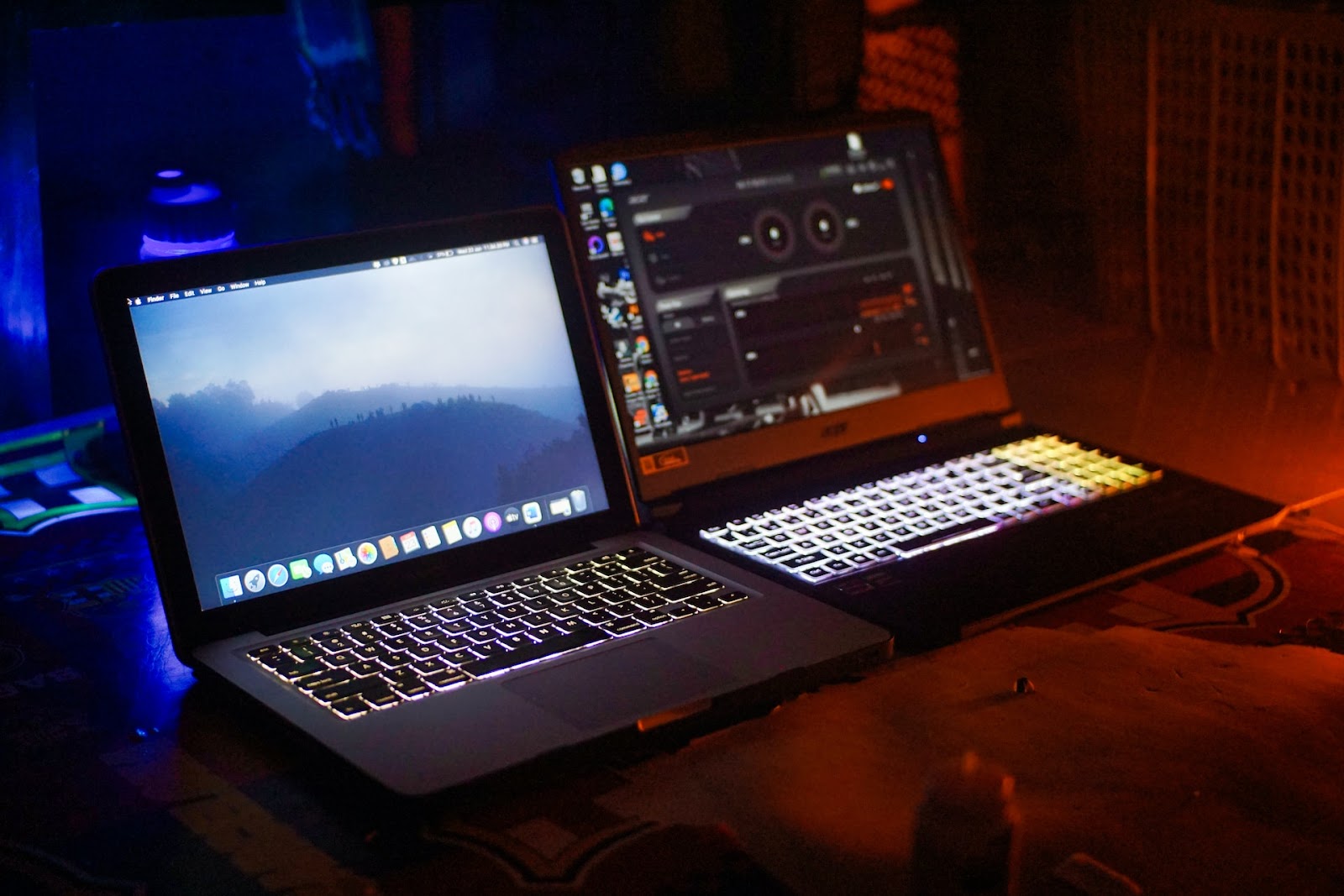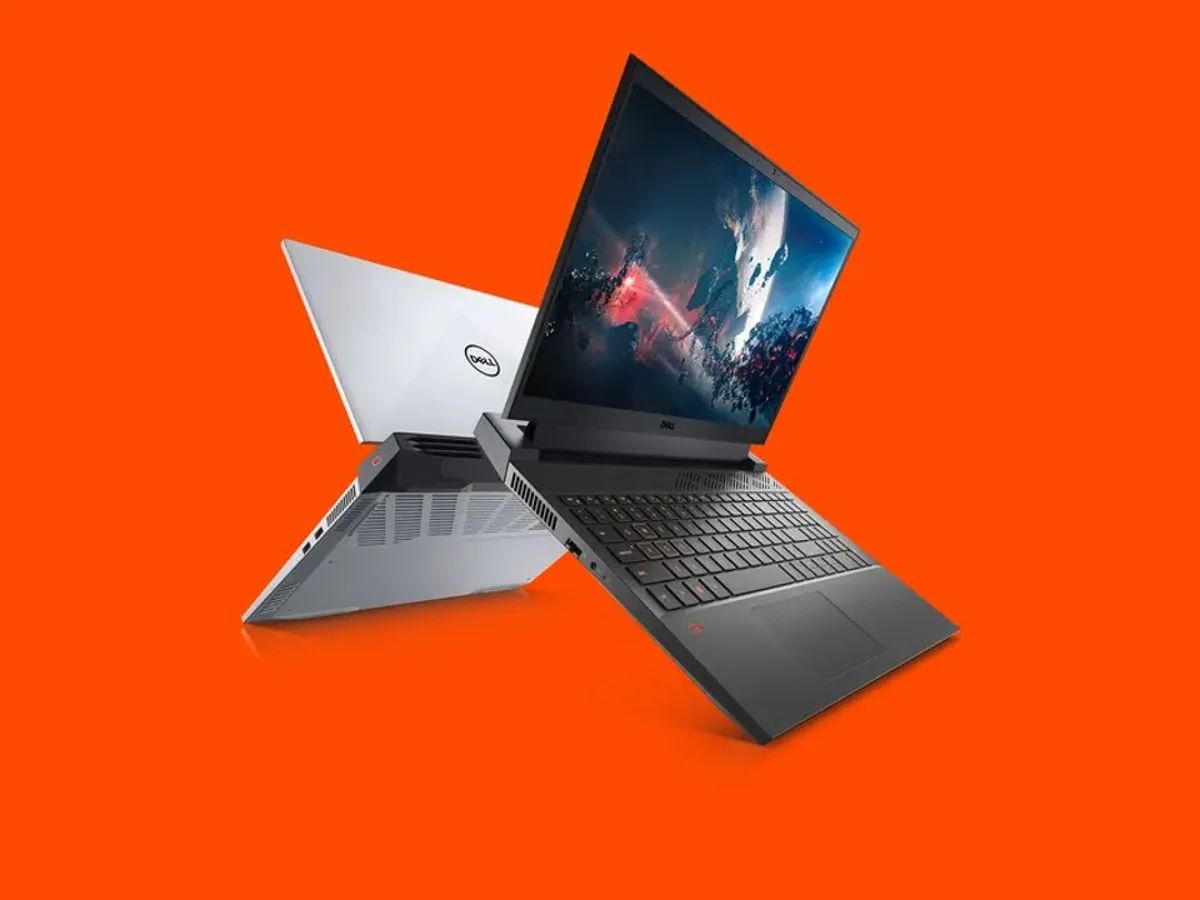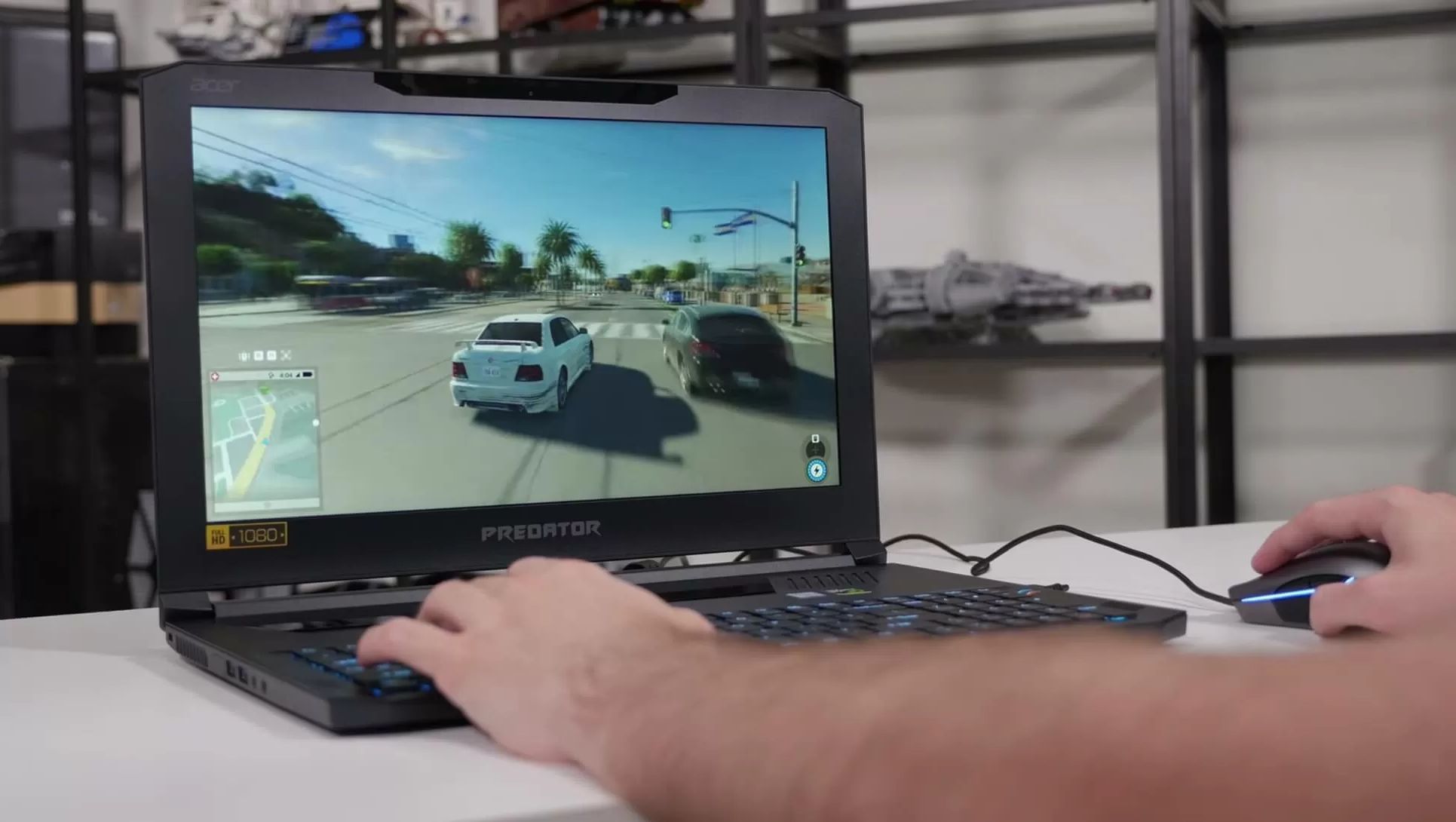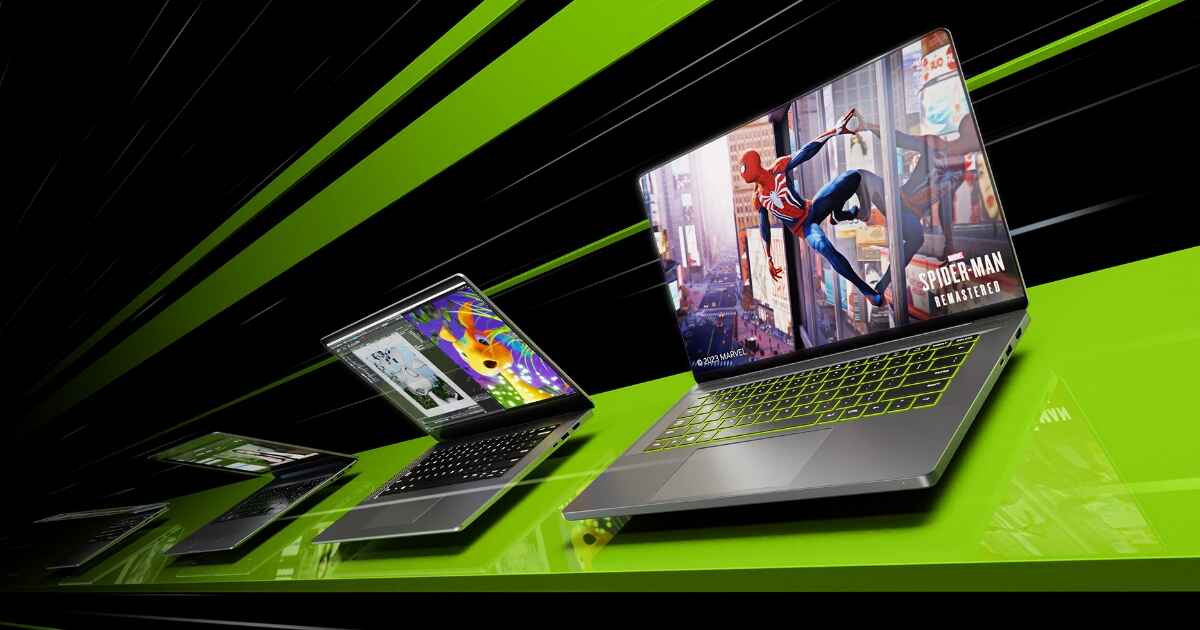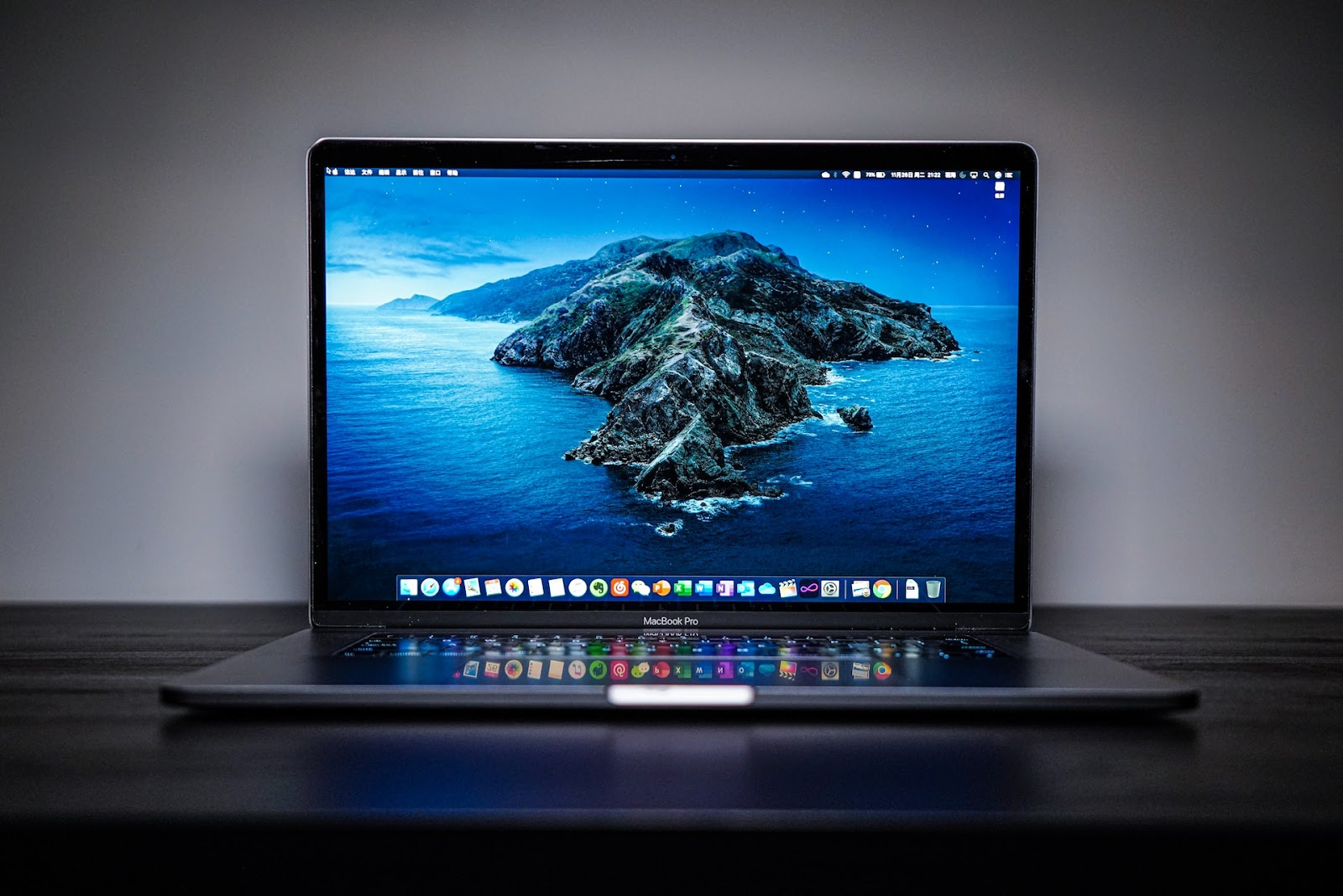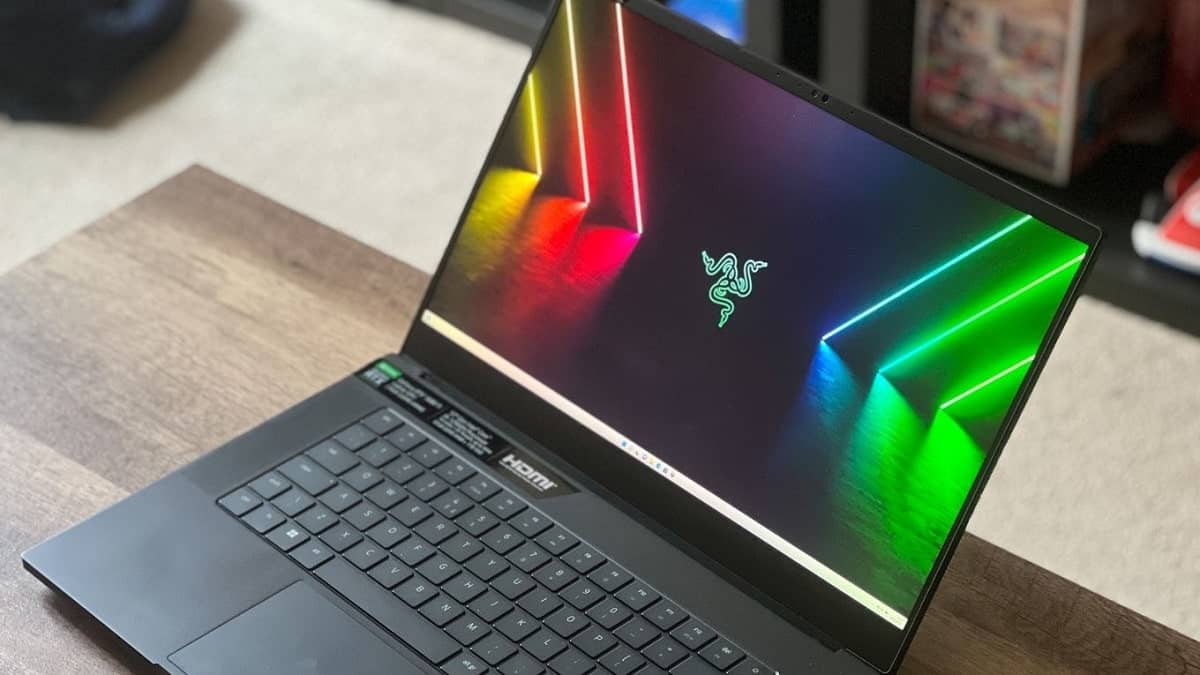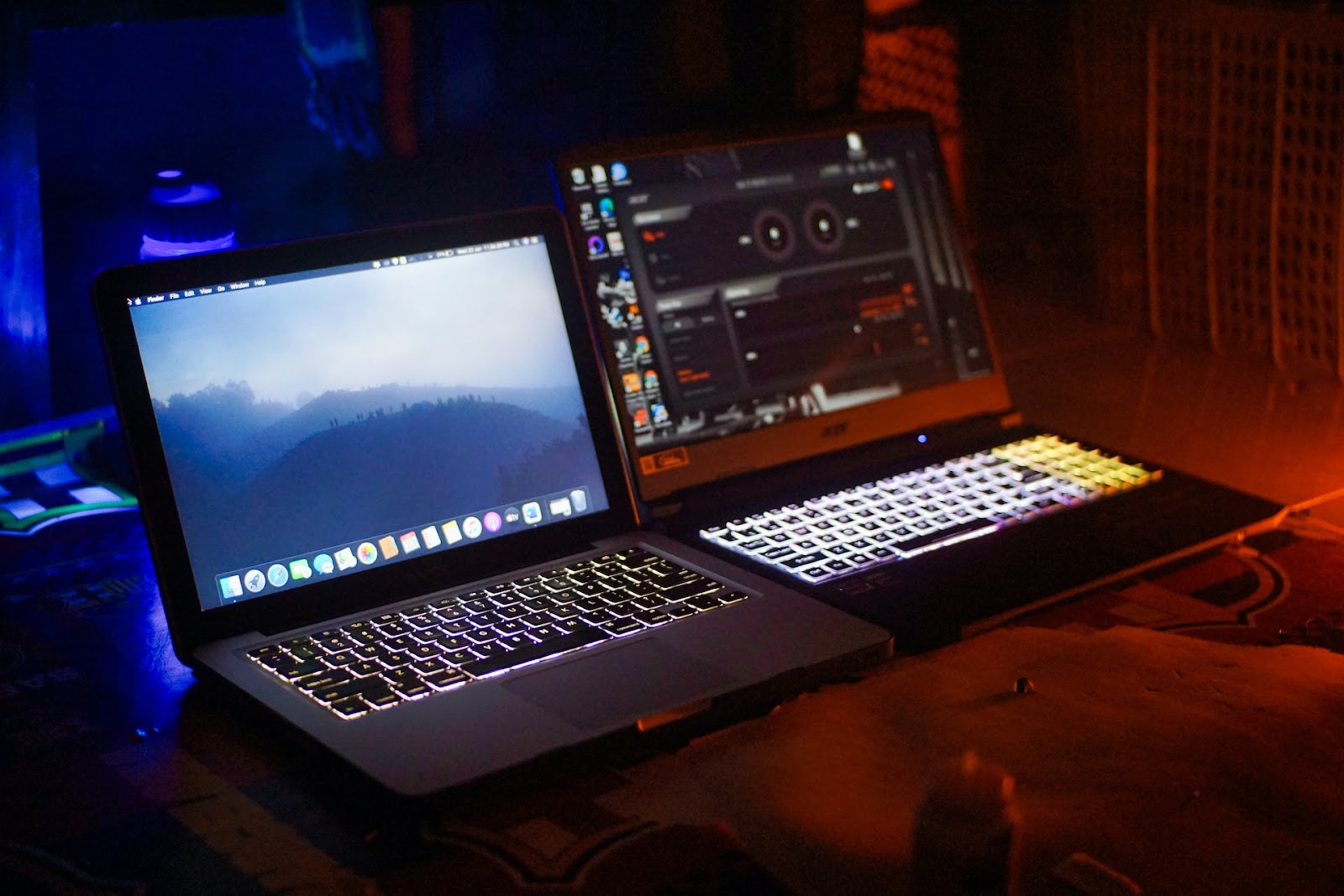Introduction
Welcome to our guide on how to increase the battery life on your gaming laptop. If you’re an avid gamer, you may have noticed that gaming laptops tend to have shorter battery lives compared to regular laptops. The powerful hardware and intensive graphics of gaming laptops consume a significant amount of battery power, which can be inconvenient if you want to use your laptop on-the-go. However, with a few adjustments and optimizations, you can extend the battery life of your gaming laptop and enjoy longer gaming sessions without worrying about running out of power.
In this article, we will provide you with effective tips and techniques to help you maximize the battery life of your gaming laptop. From adjusting power settings to optimizing graphics and reducing unnecessary background programs, we will cover various aspects that can contribute to prolonging your laptop’s battery life. So, whether you’re a casual gamer or a professional esports player, these tips will assist you in getting the most out of your gaming experience while conserving battery power.
Please note that while these tips are tailored towards gaming laptops, many of them can also be applied to other types of laptops. So, even if you’re not a gamer, you can still benefit from implementing these battery-saving techniques to extend the overall battery life of your laptop.
Now, let’s dive into the various methods and strategies that can help you increase the battery life on your gaming laptop. By following these recommendations, you’ll be able to enjoy your gaming sessions for longer durations without constantly worrying about your battery level.
Adjust Power Settings
One of the first steps to increase your gaming laptop’s battery life is to adjust the power settings. By tweaking these settings, you can optimize your laptop’s performance and reduce unnecessary power consumption. Here are some tips:
- Power Plans: Windows laptops offer different power plans, such as Balanced, Power Saver, and High Performance. You can access these plans through the Control Panel or the battery icon in the system tray. Choosing the Power Saver plan can significantly improve your laptop’s battery life by reducing the energy usage of various components.
- Processor Power Management: Within the power plan settings, you can fine-tune the processor power management options. Lowering the maximum processor state can reduce the CPU’s performance but can also lead to significant power savings. You can experiment with different values to find a balance between performance and battery life.
- Screen Brightness: The screen backlight consumes a considerable amount of power. Lowering the screen brightness can have a noticeable impact on battery life. Adjust the brightness level manually or enable adaptive brightness in the power plan settings to automatically adjust the brightness based on ambient light conditions.
- Sleep and Hibernation: Customize the sleep and hibernation settings to your liking. Set shorter durations for sleep mode and consider disabling hibernation if you don’t use it frequently. This prevents your laptop from entering power-draining states when not in use.
Remember, adjusting power settings may affect your gaming experience. If you notice any performance drop or lag while playing games, consider reverting to the Balanced or High Performance power plan temporarily.
By fine-tuning the power settings on your gaming laptop, you can strike a balance between performance and battery life. These changes allow your laptop to dynamically manage power consumption based on your usage, resulting in longer gaming sessions on a single charge.
Close Unnecessary Background Programs
When you’re gaming on your laptop, it’s essential to close any unnecessary background programs that may be running. These programs not only consume valuable system resources but also drain your laptop’s battery. Here are some tips to help you identify and close unnecessary background programs:
- Task Manager: Open the Task Manager by pressing Ctrl+Shift+Esc or right-clicking on the taskbar and selecting Task Manager. Check the list of running processes and identify any programs that you don’t need while gaming. Right-click on the program and select “End Task” to close it.
- Startup Programs: Some programs automatically start when you boot up your laptop, even if you don’t need them during gaming sessions. To manage startup programs, open Task Manager, go to the “Startup” tab, and disable any unnecessary programs from launching at startup.
- System Tray: The system tray, located in the bottom-right corner of the screen, contains icons for various running programs. Right-click on any icons that represent programs you don’t need while gaming and exit or close them.
- Background Services: In addition to programs, numerous background services may be running on your laptop. Some of these services are essential for system stability, while others are unnecessary for gaming. You can view and manage services by typing “services.msc” in the Run dialog box (Win + R) and disabling or setting unnecessary services to manual.
By closing unnecessary background programs, you free up system resources, including CPU, RAM, and disk usage. This not only improves your gaming performance but also reduces power consumption, ultimately extending your laptop’s battery life.
Remember, it’s important to exercise caution when closing programs and services. If you’re not sure about the function of a particular program or service, it’s best to leave it running or do some research before disabling or closing it. Additionally, be aware that some programs may automatically start again or require manual intervention after closing. So, regularly monitor your running programs and close any new ones that may have started.
By adopting these practices, you can minimize unnecessary resource usage and maximize your laptop’s battery life, allowing you to game for longer periods without interruptions.
Reduce Screen Brightness
The brightness level of your laptop’s screen plays a significant role in determining the battery life. Higher screen brightness requires more power, so reducing it can help conserve energy. Here are some tips to effectively reduce screen brightness:
- Keyboard Shortcut: Most laptops have dedicated keys or function keys (Fn) that allow you to adjust the screen brightness directly. Look for icons resembling a sun or half sun on your keyboard and use the corresponding key combination to decrease the brightness.
- Control Panel: You can also adjust the screen brightness through the Control Panel. Open the Control Panel, search for “Power Options,” and click on it. From there, you can find an option to adjust screen brightness. Drag the slider to decrease the brightness to a comfortable level.
- Operating System Settings: Both Windows and macOS provide system settings to adjust the screen brightness. In Windows, you can access these settings by right-clicking on the battery icon in the system tray and selecting “Adjust screen brightness.” In macOS, go to System Preferences > Displays, and there you can control the screen brightness.
- Automatic Brightness: Many laptops offer an automatic brightness adjustment feature. When enabled, the laptop adjusts the screen brightness based on ambient light conditions. This way, the screen will be brighter in well-lit environments and dimmer in darker surroundings, optimizing both visibility and power consumption.
Reducing the screen brightness not only conserves battery power but also helps reduce eye strain during extended gaming sessions. Finding the right balance between brightness and visibility is crucial for a comfortable gaming experience.
Keep in mind that you should lower the screen brightness to a level that is still comfortable for your eyes. Too low of a brightness may strain your eyes, while too high of a brightness may hinder battery conservation. Experiment with different brightness levels to find the optimal setting for your gaming needs.
By reducing the screen brightness on your gaming laptop, you can significantly extend its battery life. Whether you’re gaming on the go or trying to save power at home, this simple adjustment can make a noticeable difference.
Use Battery Saver Mode
Most laptops have a built-in Battery Saver mode that can help you maximize your gaming laptop’s battery life. When enabled, this mode adjusts various settings to conserve power and extend the amount of time your laptop can run on battery. Here’s how you can utilize the Battery Saver mode:
- Windows Battery Saver: If you’re using a Windows laptop, you can enable the Battery Saver mode by clicking on the battery icon in the system tray and selecting “Battery Saver.” This mode reduces background activity, limits push notifications, and adjusts other system settings to minimize power consumption.
- macOS Energy Saver: For macOS users, you can enable the Energy Saver mode by going to System Preferences > Energy Saver. From there, you can choose different energy-saving options, such as dimming the display after a certain period of inactivity, turning off hard drives when possible, and more.
By activating the Battery Saver or Energy Saver mode, you can have more control over your laptop’s power usage while gaming. While this mode may slightly affect performance or disable certain features, it significantly extends your battery life. It’s especially useful when you’re gaming on the go or have limited access to a power source.
Keep in mind that different laptops may offer variations of Battery Saver modes or provide additional power management settings. Exploring your laptop’s power options and experimenting with various settings can further optimize your gaming laptop’s battery life.
Remember to disable the Battery Saver or Energy Saver mode when you’re plugged into a power source or when you need full performance for demanding games or tasks. While these modes are great for conserving battery power, they may limit the performance of your gaming laptop to some extent.
By utilizing the built-in Battery Saver mode on your gaming laptop, you can customize power settings to optimize battery life during your gaming sessions. This feature provides a convenient way to extend your gaming time without compromising overall performance.
Optimize Graphics Settings
Gaming laptops come equipped with powerful graphics cards to deliver stunning visuals and smooth gameplay. However, these high-performance graphics cards consume a significant amount of power. Optimizing your graphics settings can help strike a balance between visual quality and battery life. Here are some tips to optimize graphics settings on your gaming laptop:
- In-Game Graphics Options: Many games provide graphics options within the settings menu. Adjusting these options can help reduce the strain on your laptop’s GPU and lower power consumption. Decrease settings such as anti-aliasing, shadows, and particle effects to achieve a good balance between performance and visuals.
- NVIDIA or AMD Control Panel: If you have an NVIDIA or AMD graphics card, you can access the respective control panel to adjust additional graphical settings. These control panels allow you to fine-tune various aspects such as texture filtering, power management, and performance settings for specific games.
- Frame Rate Limit: Limiting the frame rate of your games can have a significant impact on power consumption. Lowering the frame rate reduces the workload on the graphics card, ultimately reducing power consumption. Consider setting a reasonable frame rate limit depending on your laptop’s capabilities.
- External Monitor: If you’re gaming on an external monitor, make sure its resolution is set to the native resolution of the laptop screen. Running games at higher resolutions on an external monitor can put additional strain on the GPU, resulting in higher power consumption.
Optimizing graphics settings not only helps conserve battery power but also improves the overall gaming experience by maintaining a smoother gameplay performance. Keep in mind that different games may have different optimal settings, so it’s worth experimenting to find the right balance for each game you play.
Additionally, it’s important to note that optimizing graphics settings may result in a slight reduction in visual quality. However, the trade-off is worth it if you’re looking to extend your gaming laptop’s battery life.
By making thoughtful adjustments to your graphics settings, you can significantly minimize power usage without compromising the enjoyment of your gaming experience. With the right optimizations in place, you can maximize your gaming time and minimize battery drain on your gaming laptop.
Limit Network Usage
While gaming, your laptop may constantly be connected to the internet to provide online multiplayer experiences or access game updates. However, network activities can consume a considerable amount of power. By managing your network usage efficiently, you can extend your gaming laptop’s battery life. Here are some tips to help you limit network usage:
- Disconnect Unnecessary Network Connections: If you’re not actively using a Wi-Fi network or Bluetooth devices, consider disabling these connections. Each active connection consumes power, so disabling unused connections can help conserve battery life.
- Close Background Applications: Applications running in the background, such as file syncing services or streaming services, may consume network bandwidth and utilize power. Close any unnecessary applications that may be using your network connection while gaming.
- Disable Automatic Updates: Some game platforms or applications may automatically download updates in real-time, consuming network bandwidth and power. Disable automatic updates while gaming and schedule them for a later time when you’re plugged into a power source.
- Optimize Online Gaming Settings: In multiplayer games, consider adjusting the in-game network settings to reduce data usage. This may include lowering the maximum download/upload speeds, disabling voice chat, or minimizing background network activity.
By managing your network usage effectively, you can minimize power consumption on your gaming laptop. This, in turn, helps prolong your battery life, allowing you to indulge in gaming sessions without worrying about draining your battery quickly.
It’s important to note that while limiting network usage can conserve battery life, it may also impact your online gaming experience. Therefore, it’s crucial to strike a balance between managing network activity and maintaining a smooth and enjoyable gaming experience.
Keep in mind that these network usage optimizations may vary depending on the specific games you play and the platforms or applications you use. Experiment with different settings and configurations to find the optimal balance for your gaming needs.
By implementing these tips and effectively managing your network usage, you can extend your gaming laptop’s battery life and have uninterrupted gaming sessions wherever you go.
Avoid Overcharging
Properly managing your laptop’s battery charging is essential for maintaining its overall health and maximizing battery life. Overcharging can degrade the battery’s performance over time and lead to decreased battery capacity. To avoid overcharging your gaming laptop’s battery, follow these tips:
- Monitor Battery Levels: Keep a close eye on your battery’s charge level and avoid letting it reach extremely low levels or fully depleting. It is recommended to keep the battery level between 20% and 80% to prevent unnecessary strain on the battery.
- Unplug When Fully Charged: Once your laptop reaches a full charge, unplug it from the power source. Leaving it connected to the charger for extended periods can overcharge the battery, leading to reduced capacity over time.
- Use Battery Power Regularly: To maintain the health of your laptop’s battery, make sure to discharge it occasionally. Allowing the battery to drain and then recharging it helps prevent capacity loss caused by the “memory effect” and keeps it in good condition.
- Disable Charging Thresholds: Some laptops offer the option to set charging thresholds, which limit the battery from fully charging or discharging completely. You can configure these thresholds to keep the battery level between the recommended range and prevent overcharging.
- Avoid Extreme Temperatures: High temperatures can accelerate battery degradation, while cold temperatures can temporarily reduce battery performance. Keep your gaming laptop within a comfortable temperature range to maintain optimal battery health.
By following these practices and avoiding overcharging, you can preserve your gaming laptop’s battery life and overall longevity. Proper battery maintenance ensures that you can enjoy extended gaming sessions without experiencing major battery capacity loss or diminished performance in the long run.
Remember that different laptops may have different battery management features or settings. Refer to your laptop’s user manual or the manufacturer’s website for specific instructions on optimizing battery charging for your particular model.
By taking care of your laptop’s battery and implementing these preventative measures, you can prolong its lifespan, optimize battery health, and enjoy extended gaming sessions without worrying about the negative effects of overcharging.
Disable Keyboard Backlighting
Keyboard backlighting is a popular feature on gaming laptops that enhances the visual experience and provides convenience in low-light environments. However, the backlighting consumes additional power from your laptop’s battery. Disabling the keyboard backlighting when not needed can help extend your gaming laptop’s battery life. Here are some tips to effectively manage and disable keyboard backlighting:
- Keyboard Shortcut: Many laptops have dedicated keys or function keys (Fn) that allow you to control the keyboard backlighting. Look for the key combination with the backlight icon on your keyboard and use it to turn off or adjust the backlighting intensity.
- Software Settings: Some laptops offer software control over keyboard backlighting. You can access these settings through the manufacturer’s utility software or the laptop’s control panel. Adjust the settings to disable keyboard backlighting or set a timeout period, enabling the backlighting to automatically turn off after a certain period of inactivity.
- Manage Power Plans: Keyboard backlighting may be customizable within your laptop’s power plan settings. Explore the power plan options and adjust the keyboard backlighting settings to minimize power consumption or turn off backlighting when on battery power.
By disabling or adjusting the keyboard backlighting, you can prevent unnecessary power drain and extend your gaming laptop’s battery life. However, be mindful of your environment and gaming needs. If you require keyboard visibility in dimly lit conditions, adjust the backlighting to a minimal level that still allows comfortable gaming.
Keep in mind that certain gaming laptops have per-key RGB backlighting, providing more advanced customization options. These laptops often come equipped with software that allows you to control individual key lighting. Take advantage of these options to disable or dim specific keys that are not essential during your gaming sessions.
By effectively managing the keyboard backlighting on your gaming laptop, you can save valuable battery power and ensure an optimal balance between visibility and battery life. Implementing these tips enables you to extend your gaming sessions while preserving battery power for extended periods without access to a power source.
Clean the Laptop’s Cooling System
The cooling system of your gaming laptop plays a crucial role in maintaining optimal performance and preventing overheating. Over time, dust, dirt, and debris can accumulate in the cooling system, obstructing airflow and causing the laptop’s components to work harder, leading to increased power consumption and reduced battery life. Regularly cleaning the cooling system can help improve airflow efficiency and keep your gaming laptop running smoothly. Here’s how you can clean the cooling system:
- Power Off and Unplug: Before cleaning the cooling system, shut down your laptop and disconnect it from the power source to avoid any electrical hazards.
- Access the Cooling System: Refer to your laptop’s user manual or manufacturer’s instructions on how to access the cooling system. Typically, this involves removing the bottom panel or keyboard to access the fan and heat sink.
- Use Compressed Air: With the laptop opened up, use a can of compressed air to blow out the dust and debris from the fan, heat sink, and vents. Hold the can upright and use short bursts of air to prevent liquid from spraying onto the components.
- Remove Stubborn Debris: If there are stubborn debris or dust particles, you can use a small brush or cotton swabs lightly moistened with isopropyl alcohol to carefully clean the components. Be gentle to avoid damaging any delicate parts.
- Reassemble and Test: Once you’ve cleaned the cooling system, carefully reassemble the laptop following the reverse of the disassembly instructions. Ensure that all connections are secure. Power on your laptop and monitor the temperatures to ensure that the cooling system is functioning efficiently.
Cleaning the cooling system of your gaming laptop not only enhances its performance but also helps reduce power consumption by maintaining optimal temperature levels. A clean cooling system allows your laptop’s components to operate more efficiently, reducing the strain on the battery and extending its life.
It is recommended to clean the cooling system every 4-6 months or as needed, depending on the environment your laptop is used in. If you frequently game in dusty or pet-filled environments, you may need to clean the cooling system more frequently.
By regularly cleaning the cooling system, you can improve the airflow, prevent the laptop from overheating, and ultimately extend the battery life of your gaming laptop. It’s a simple maintenance task that can have a significant impact on the overall performance and longevity of your device.
Conclusion
Optimizing the battery life of your gaming laptop is essential for uninterrupted gaming sessions, especially when you’re on the go. By implementing the tips and techniques outlined in this guide, you can maximize the battery life of your gaming laptop and enjoy longer gaming sessions without worrying about running out of power.
We started by adjusting the power settings of your laptop, optimizing the performance and power consumption to find a balance that suits your gaming needs. Closing unnecessary background programs and reducing screen brightness were two strategies that helped conserve power and extend battery life. Additionally, utilizing the Battery Saver mode and optimizing graphics settings were crucial in minimizing power usage and enhancing efficiency during gaming sessions.
We also discussed the importance of managing network usage and avoiding overcharging to maintain the health and longevity of your laptop’s battery. Disabling keyboard backlighting and cleaning the cooling system were other effective techniques to save power and ensure optimal performance.
Remember, these tips are meant to be adaptable to different types of laptops and gaming setups. Experiment with the settings to find what works best for you and your specific gaming preferences.
By incorporating these strategies into your gaming routine, you can make the most out of your gaming laptop’s battery life. Balancing performance with power efficiency not only allows for longer gaming sessions but also contributes to the overall longevity and health of your laptop’s battery.
So, go ahead and enjoy your gaming experience while maximizing the battery life of your gaming laptop!







